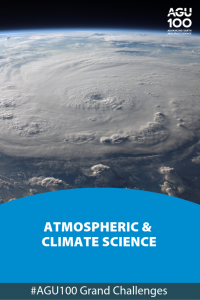
How can we better predict medium term weather that is beyond the scope of daily forecasts but shorter than seasonal climate outlooks? There are growing demands for such “sub-seasonal to seasonal” prediction of weather and climate which can help decision-makers to better manage weather risks and extremes, and adapt to climate change. (JGR: Atmospheres)
How can we enhance our ability to predict the risk of climate extremes and rapid climate transitions? Our historical records of global climate change (e.g., temperature records, tide gauges, satellite data) cover only a short period of time, but research on rapid, large global climate changes over the past million years of ice ages provides an opportunity to place the short instrumental record into a long-term context. Earth system models can be applied to past and future scenarios to enhance our ability to model and predict climate change. (Paleoceanography and Paleoclimatology)
Can a phased array radar (PAR) be developed to offer accurate weather monitoring and predictions? PAR can track multiple targets, map storms and precipitation at unprecedented temporal and spatial resolution, and estimate 3-D winds and rain rates concurrently. Technological challenges lie ahead in developing antenna, transmitter and receiver subsystems for realizing rapid measurement and finer spatial resolution capability. (Radio Science)
How can we more accurately measure and model the phenomenon of new particle formation in the atmosphere? In particular, we need a better understanding of factors that influence the formation and growth of new particles since they affect human health and air quality at urban, regional, and global scales. (JGR: Atmospheres)

